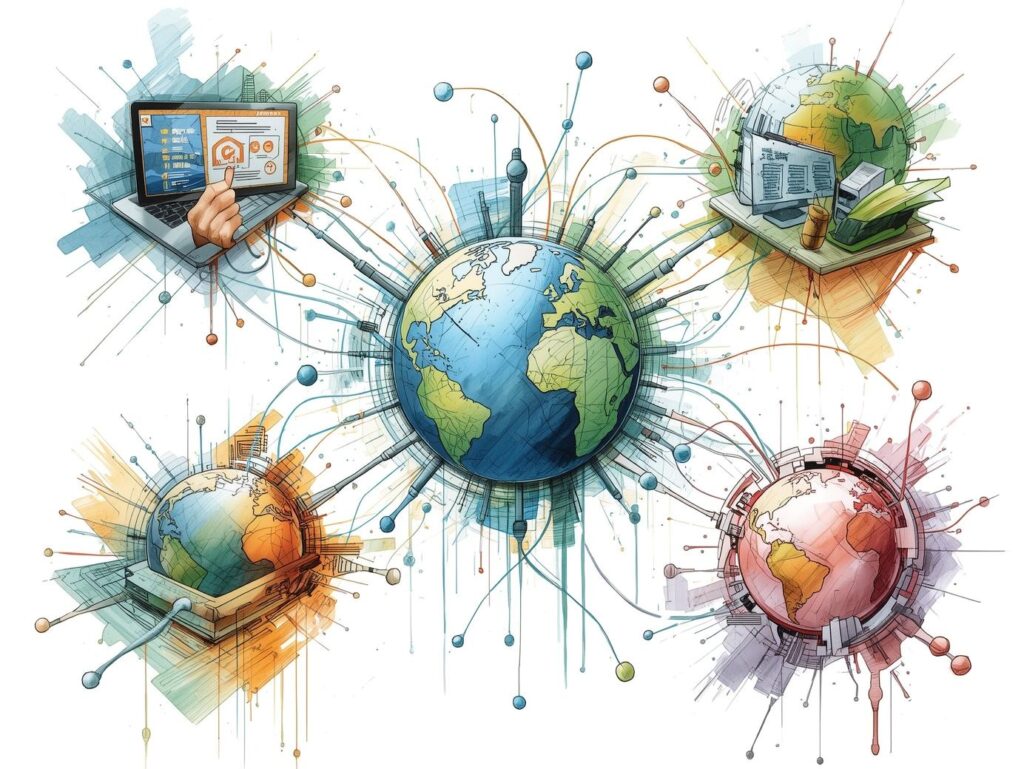Introduction
The 21st century presents a unique opportunity to integrate health, education, and sustainability through smart technologies. Innovations such as Artificial Intelligence (AI), the Internet of Things (IoT), wearable devices, and digital learning platforms are reshaping how communities learn, access healthcare, and manage resources.
For organizations like CHUYA SONCCO, leveraging smart tech is not just about innovation—it is a way to enhance human development, foster equity, and create sustainable communities.
Smart Technology in Health
1. Telemedicine and Remote Monitoring
- IoT devices and wearable sensors allow continuous health monitoring, enabling early diagnosis and intervention.
- Telemedicine platforms connect rural populations with specialists in urban centers, reducing disparities in healthcare access.
2. AI-Assisted Diagnostics
- Machine learning algorithms analyze medical data for predictive diagnostics, personalized treatment plans, and public health monitoring.
- Communities benefit from faster, more accurate, and cost-effective healthcare.
3. Preventive Health and Wellness
- Smart apps track nutrition, physical activity, and chronic conditions.
- Data-driven insights encourage healthy lifestyles and disease prevention.

Smart Technology in Education
1. Digital Learning Platforms
- AI-powered tools personalize education to student needs, learning styles, and progress.
- Virtual classrooms and e-learning modules extend quality education to rural and marginalized communities.
2. STEM and Innovation Labs
- Hands-on labs with robotics, AI kits, and virtual simulations foster critical thinking, creativity, and problem-solving skills.
- Youth are prepared for future careers in technology, health, and sustainability sectors.
3. Gamification and Interactive Learning
- Gamified learning environments increase engagement and retention.
- VR and AR applications provide immersive experiences, making complex concepts accessible and engaging.
Smart Technology for Sustainability
1. Smart Agriculture
- IoT sensors monitor soil, water, and climate conditions, enabling efficient resource management.
- AI models predict crop yields, optimize planting, and reduce environmental impact.
2. Renewable Energy and Resource Management
- Smart grids, solar panels, and energy management systems ensure efficient and sustainable energy use.
- Communities can monitor and optimize water usage, waste management, and energy consumption.
3. Environmental Monitoring
- Drones and sensors track deforestation, pollution, and biodiversity changes, supporting conservation efforts.
- Data-driven insights guide policy, education, and community action.
Benefits of Integration
- Holistic Community Development
- Health, education, and sustainability initiatives complement each other, improving overall quality of life.
- Equitable Access
- Smart tech bridges gaps for rural, marginalized, and vulnerable populations.
- Data-Driven Decision Making
- Real-time analytics inform policy, program design, and community interventions.
- Youth Empowerment
- Digital skills and innovation opportunities prepare young people for future leadership roles.
- Resilience and Adaptability
- Communities become more capable of responding to environmental, health, and social challenges.
Challenges and Considerations
1. Infrastructure and Connectivity
- Reliable internet and digital infrastructure are essential for the success of smart tech initiatives.
2. Digital Literacy
- Training is required for educators, healthcare workers, and community members to use technology effectively.
3. Privacy and Ethics
- Data collected from health, education, and environmental systems must be secure and ethically managed.
4. Sustainability of Tech Solutions
- Smart technologies must be affordable, maintainable, and environmentally responsible.
The Role of CHUYA SONCCO
CHUYA SONCCO implements smart technology initiatives to integrate health, education, and sustainability through:
- Digital Health Programs
- Telemedicine, AI diagnostics, and wearable health devices for underserved communities.
- Education 4.0 and Innovation Labs
- STEM programs, digital classrooms, and AI-enhanced learning platforms.
- Sustainability Projects with Smart Tech
- Smart agriculture, renewable energy microgrids, and environmental monitoring systems.
- Capacity Building and Training
- Empowering educators, healthcare professionals, and youth with skills to leverage smart technologies.
- Community Engagement and Participation
- Ensuring local stakeholders are active participants in designing and implementing technology-driven solutions.
Conclusion
Integrating health, education, and sustainability with smart technology offers a transformative path for emerging societies. By combining innovation, data-driven insights, and human-centered design, CHUYA SONCCO fosters communities that are:
- Equitable and inclusive
- Resilient and empowered
- Sustainable and forward-looking
Through these initiatives, smart technology becomes a tool not only for efficiency but for social good, creating a future where every community has the resources, knowledge, and capacity to thrive.





